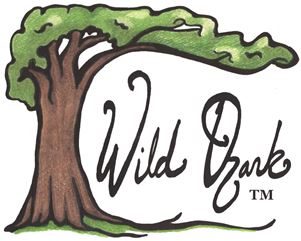Green Dragons, anyway!
They’re not really “hatching”, but they are sprouting.

Even the seedling looks like a cute little dragon head… if you have a good imagination. It also looks like a cobra with flared hood peering up over the lip of the pot.
The common name of this plant fascinates me as much as the plant itself. Even the latin binomial is a cool name:
Arisaema dracontium
Try saying it out loud. There’s no way you can say it without it sounding exotic, even if you can’t pronounce it correctly. I just like being able to say I have a dragon. Now I have LOTS of dragons. And a Green Dragon is probably a lot safer than the reptilian sort, anyway.
Ginseng Indicator Plant
Green Dragon grows on the lower levels of hills, and usually near a spring or other source of water that helps to keep the ground moist (not soggy). Ginseng will also grow in places that the Dragon chooses to inhabit, as long as the ground isn’t too wet.
Just don’t try to eat this plant. The whole plant contains calcium oxalate crystals, which from what I’ve heard described, feels like razor blades in your mouth if you chew it. Birds and small animals do eat the berries, but they can eat many things we can’t. The root is fairly tuberous and can be eaten if thoroughly cooked… but who’s going to try it to see if it’s well-done enough? I’m not willing to risk checking to see if still feels like chewing up ground glass.
It grows to about two feet high, with a single stem and a palmate leaf on the top. The leaf is divided into two main portions, each having several leaf-like parts that hang over the fruiting stem like a flattened umbrella. The flower comes up on the second stem. As a flower it’s not very showy except for the long tip on the spathe that curves and gives the plant its name (because it supposedly resembles a serpent’s tongue).
According to Wildflower.org, it was once used as a medicinal and ritual plant by the Menominee tribe in Wisconsin. The plant is fairly rare in some parts, but is commonly found in shady moist places in the Ozarks. I’ll have nursery plants available in spring if this batch survives winter. This is yet another slow-to-mature plant, like ginseng and goldenseal, so the flowering and fruiting won’t occur for two or three years.
Like ginseng, dragons rely on a specific habitat to thrive. This habitat is destroyed when we build roads and log the forest where they live. They’re rare in some places, and even here where they are not considered rare, I only find them in the specific places – and those places are becoming rare.
The dragon in this picture grows in a moist shady place on the side of my county road. Once there was also a huge raspberry bramble there and I looked forward to the harvest of those sticky sweet fruits every year. Last year someone (the land-owner) sprayed the entire stretch with an herbicide and killed everything, including the raspberry. I mourned the loss of that berry bramble, and for the others that perished with it. Some of the plants, like this Dragon, survived. The raspberries are just beginning to come back, which puts them at risk for being sprayed again by the landowner. I’ve transplanted some to Wild Ozark now, so at least if the original bramble dies out there are more alive and well inside our gates.



Please love and conserve the wild areas where plants like these grow.
You can get a poster with the Story of the Dragon on it!
I have three sizes to offer. Click the image below to head over to the Wild Ozark RedBubble Shop.

Here’s my drawing of the Green Dragon. Posters will be available for it eventually (once I get them uploaded to RedBubble), but prints are available now on fine art paper.

Go forth and enjoy the Wilds wherever you are!

Pingback: Dragons Hatching, Clematis Blooming, and Feeding Horses in the Rain
Pingback: A Woodland Habitat - Dragons among the Nettles and Cohosh
I have a picture of a plant I think would be this the berries/fruit is just like the ones above. Wish I could post it because I’ve never seen anything like it.
Hi Kayla, you can email it to me if you want and I’ll post it for you. It could either be a green dragon or a jack-in-the-pulpit. The two have very similar berry clusters like that and without leaves it’s pretty hard to tell the difference. The leaves from the dragon I photographed are gone now, but there might have been some shriveled ones to look at if I hadn’t already been watching that plant that might have helped to id it. My email is . Thanks for commenting!
Pingback: Slugs and Dragons and Ginseng, Oh My! Wild Ozark Creations